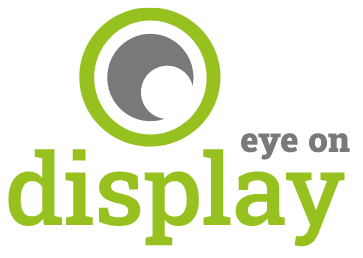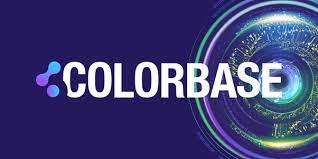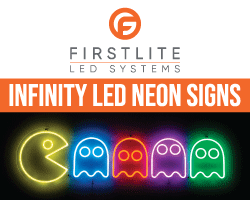ColorBase, Under the Hood
The data model upgrade enabling a smarter printing industry

The ColorBase database of material, printer, RIP, and ICC profile data is undergoing a quiet transformation. While it’s true that code is never “done” – iterative progress is the rule, not the exception – ColorBase is undergoing an internal transformation that far exceeds the scope of routine day-to-day improvements. They’re on to something big.
Until now, they haven’t talked openly about it. Most of the details are frankly very technical, and typically, how the system works isn’t anywhere near as relevant as what it can actually do for users and partners. That said, their recent nomination for the 2023 Computable Awards in the Digital Transformation category (you can vote now here) has inspired ColorBase to “pop the hood” and reveal what they’re working on, and the tools they’re using to do it.
The Origin Story
At the core of the transformation is an expansive upgrade to the ColorBase data model – the ‘digital rebar’ that gives the data structure. This structure in turn makes the ColorBase dataset searchable, sortable, and ready for complex analysis and AI training – in short, giving it the value upon which customers and partners rely. But more on that later – here’s how it all began.

Some ICC profiles have consistent style, while some can be individually branded
The ColorBase data model was first set up to enable the sharing of ICC profiles through our network of Profile Download Clients, which over the years have taken different forms. Some, like the Roland Profile Center, are branded and styled to look indistinguishable from the rest of our clients’ sites, while others, like the Drytac ColorBase Partner Page or our ColorBase Profile Search tool, have varying levels of brand connections – but the same underlying ColorBase data set of ICC profiles powers all.

The ColorBase data model is expanding
Since the introduction of ColorBase’s PDCs, the world has changed. We are on the cusp of radical new paradigms like Industry 4.0 and the Internet of Things – every industry on the planet is scrambling to birth ‘digital twins’ of all their inputs, products, supply chains and relationships. Atom by atom, organisations and industries are ripping apart their products and services and storing them as bits and bytes. If done thoughtfully and thoroughly, these digital transformations enable every business activity to be represented by data, scaling existing activities at light speed and creating new ones altogether. This is the transformation that ColorBase is undertaking – the data model is expanding from an extensive profile library to a complete ‘digital twin’ of the printing industry, with a data model built to capture every aspect of every printer, material, RIP, and business relationship in the $900 billion dollar printing industry.
The Heavy Lifting
ColorBase Technical Lead Tony Liang has been at the epicentre of this effort since 2018. After literally countless late nights filled with pizza boxes, technical data sheets, and whiteboard sessions, the end is in sight. “It’s been like writing the dictionary,” he explains. “We have synthesized years of Color Concepts lab work into our new ontology, and from that, the new ColorBase model.” Through performing proprietary programs like the HP Latex Certification and our Material Testing programs, ColorBase have collected a massive amount of data on the print materials that PSPs load into printers every day. This hard-earned knowledge has been boiled into a sophisticated and holistic data model much more powerful than an ICC profile library – even the largest one in the world.

ColorBase has collected a massive amount of data on the print materials that PSPs load into printers every day
Confusingly, this new data model is already live, and powers the new generation of ColorBase apps like ColorBase Exchange and ColorBase Labs. However, the Profile Search tool and PDCs still run on the old data model – running these two systems in parallel has generated its own set of challenges. Moving from one to the other requires a set of mappings that are “non-trivial”…to say the least. For example, the old data model contains a parameter for ‘ink types’, but the new one differentiates between ‘ink series’ and ‘ink technologies’. Each ink type must be considered on a case-by-case basis as to which new parameter it fits into. Needless to say, Tony and his team have been busy.
The Payoff
But what does all of this mean for customers? What can a “sophisticated and holistic” data model actually do?”

ColorBase is straightforward to work with for data analysis
Well, in short, it makes ColorBase incredibly straightforward to work with for data analysis. Finding relationships and correlations requires far less data manipulation than ever before and is far easier for business analysts and data scientists alike to identify new opportunities and insights. You can see this work in real-time in ColorBase Labs, the new testing platform that is flexible enough to capture and digitise any organization’s testing activities and visualise them in intuitive, interactive reports.
But this is just the beginning. As ColorBase becomes a ‘digital twin’ of our industry, not only will tools like ColorBase Exchange reimagine procurement processes, but we will generate data with sufficient structure to effectively train the next wave of generative AIs that are reframing the way we think about life and work. While potentially powerful, these AIs are only as good as their training data. ColorBase’s mapping of the print industry is the first step in unlocking the potential of these incredible new tools for enterprise purposes.
The Teamup
Helping ColorBase execute this ‘nomination-worthy’ digital transformation are key partners, namely, Google Cloud and Vanenburg Software, and the collection of tools they provide.
Google Cloud and their powerful, eco-friendly data centres and cloud services power everything that ColorBase’s new tools are built on. They heavily rely on everything from Google Firestore, App Engine, Big Query and Looker to bring the ColorBase platform to life and to ensure it seamlessly scales to meet demand.
Vanenburg Software, their development partner, shares their commitment to building beautiful SaaS products. Rappit, their application development accelerator, is being used by both their developers and the ColorBase team alike. Not only does it increase the speed at which skilled programmers can work, but it enables our product managers to prototype new features and build simple functionality themselves without writing a line of code. This keeps ColorBase lean, agile, and responsive.
The Vote
ColorBase hopes to share the podium with Vanenburg and Google Cloud this October when the votes are cast, and the judges have decided which digital transformations are worthy of a Computable Award.
You can vote for ColorBase on the Computable Award website in the Digital Transformation category! Click the image to get there.












